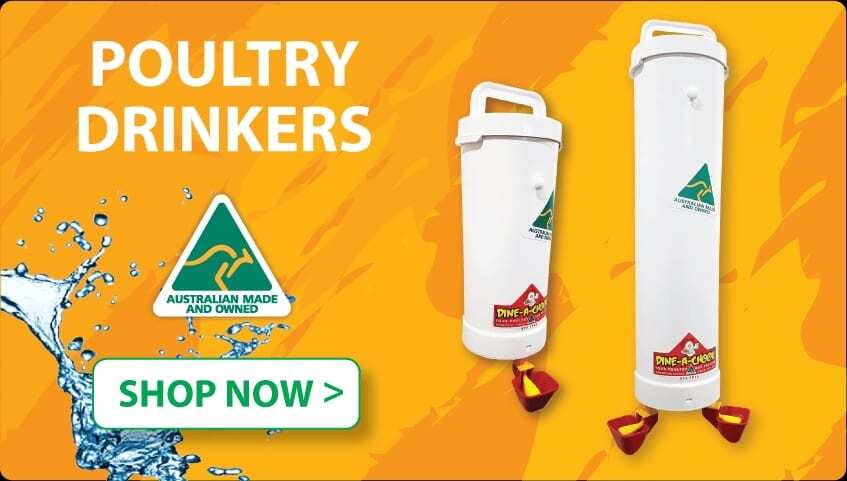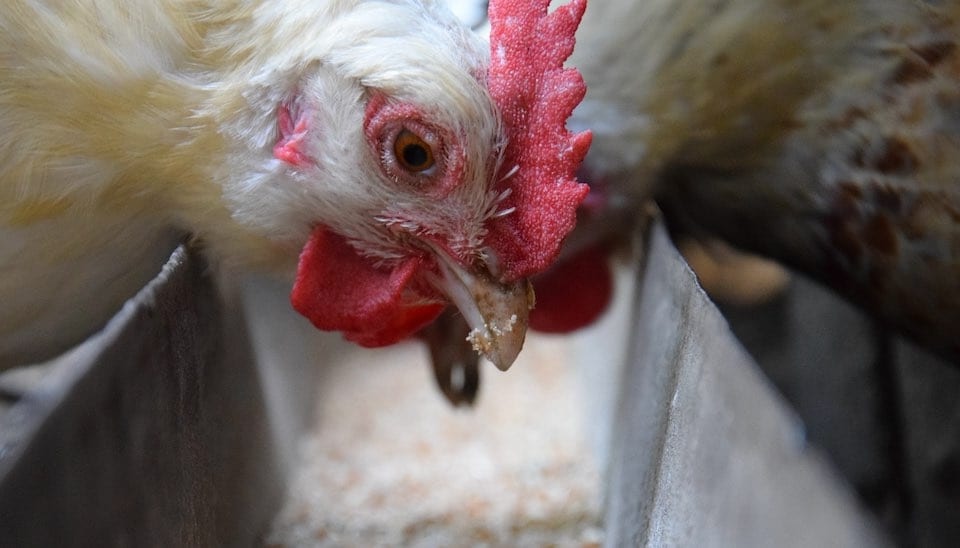Everything You Need to Know About Chicken Drinker Lubing Cups
If you're thinking about upgrading your chicken coop or just curious about Lubing Cups, this guide is for you. We’ve gathered the top 10 questions about Lubing Cups to help you get all the answers you need.
1. What is a Lubing Cup?
A Lubing Cup is a simple water-delivery system for chickens and other poultry. It has a special float valve that releases water when a hen presses down on it. This system is designed to keep water clean, reduce spills, and even help deter pests like rodents.
Plus, the Dine-A-Chook version comes with an upgraded float that lets more water flow, making it easier for your chickens to drink.
Check out our chicken drinkers and Lubing Cups.
2. Why Use a Lubing Cup Drinker?
Lubing is a German company known as the world leader in hydration systems for poultry farmers and breeders.
Their Lubing Cups are built to last, whether you’re a backyard chicken keeper or running a larger operation. After trying out different options, we found that Lubing Cups are the best for preventing spills and keeping water clean.
That's why we use them in our Dine-A-Chook chicken drinkers.
3. What’s the Difference Between Lubing Cups and Nipples?
The two main forms of water delivery for poultry are chicken drinking cups and nipples. They both are effective ways to prevent water spillage, drips and mess. They are also both effective in preventing contamination of the drinking water.
Drinker Cups have a small amount of water that hens and other poultry can insert their beaks to drink. They 'naturally' release more water by way of pressing the float valve. Many backyard chicken keepers prefer this more "natural" delivery system.
Nipples have special tips which release water when pressed. Nipples, on the other hand, are often used in commercial setups and are great for waterfowl like ducks since they reduce splashing and mess.
If you’ve got ducks along with your chickens, you might need both systems. Ducks love to splash, so they’ll need a wet area like a pond or a bucket where they can dunk their heads. You should try however to keep this wet location away from feed areas.
4. Can ducks use Lubing Cups?
Depending on the size of the duck beak, your duck may be able to happily use a Drinking cup. However as ducks love splashing water around, some of our customers prefer Dine A Chook Nipple Drinkers.
See our Dine-A-Chook Duck Waterers
5. Can Other Birds Use Drinking Cups?
Yes, Lubing Cups work well for a variety of birds. Our customers have had success using them with chickens, bantams, turkeys, guinea fowl, peacocks, and even ducks. They’re a good option if you have a mixed flock.
6. Do Lubing Drinker Cups Leak?
Lubing Drinker Cups are designed to be leak-free and drip-free.
However, over time, sediment or calcification can build up in the valve, which might cause leaks. This is easy to fix with a bit of regular cleaning. We’ve got some tips below on how to keep your cups in good working order.
7. What is the Dine-A-Chook Lubing Cup Float Upgrade?
At Dine-A-Chook, we noticed that some traditional Lubing Cups didn’t let enough water through, especially for larger chickens. So, we designed our own float that allows more water into the cup. This means higher water levels, making it easier for your chickens to drink.
Check out our chicken drinkers with the upgraded Lubing Cups.
8. How Many Cups Do I Need?
To make sure all your chickens get enough water, we recommend one Lubing Cup for every six chickens.
If you’re using an automatic chicken waterer, you might be able to stretch that to one cup per eight birds, depending on their drinking habits.
9. How do I clean my Chicken drinker Cups?
Keeping your Lubing Drinker Cups clean is simple. A quick rinse with the hose when you’re topping up your Dine-A-Chook chicken drinker usually does the trick. For long-term maintenance, we suggest giving the cups a deep clean every few months to keep them in top shape.
Browse our chicken drinkers for more details on how to maintain a clean and efficient watering system.
10. How Do I Maintain My Lubing Drinker Cups? Instructions for a Deep Clean
To maintain your Drinker Cups, we recommend doing a deep clean every few months. To do this, remove the nipple valve as shown below and wash in warm, soapy water. Rinse well and reassemble. Ensure you clip the valve back in correctly and spin it gently with two fingers to ensure it is moving freely.

1. Remove Lubing Cup from Drinker
Gently unscrew Lubing Cup from Drinker or Outlet Frame, being careful not to lose the o-ring. Once you have the Lubing Cup free of the Drinker/Frame, remove the o-ring and set aside until reassembly.
2. Remove nipple valve
Use multigrip pliers to pull the nipple valve out of the top of the Lubing Cup. Note that the valve has two parts.

3. Remove the float
Using the pliers, gently grasp the pin at the side of the Lubing Cup and remove. The float will fall out.
4. Wash all components
Hand wash the Lubing Cup components in warm, soapy water using a soft cloth. If the Cup is particularly soiled, you may need to soak for a little while. Do not scrub. Do not use boiling water. Do not place in the dishwasher. Rinse well.
5. Reassemble
To reassemble, hold the float in place and push the pin back into place. Replace the valve, ensuring the smaller pin goes in first. With your fingers, check that the pin and nipple spin freely. As long as the pin and nipple spin, the system will work correctly.
If you run into any problems while cleaning or reassembling your drinker cups, don’t hesitate to contact us. We’re always happy to help!






